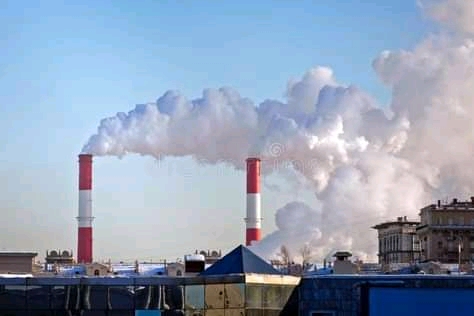By: Jemimah Chungu
A meta- analysis of 14 air pollution studies from around the world discovered that exposure to high levels of air pollutants during childhood increases the likelihood of high blood pressure in children and adolescents, and their risk for high blood pressure as adults.
Air pollution comes from; smoking, waste, industrial and production work and other human made sources. According to a report by the KSU / the sentinel Newspaper this week on Tuesday 19th May, 2021; data published by WHO in November 2016 indicated that among the listed as main causes for the occurrences of diseases in the ‘Global Burden of Disease Study’ were active smoking, and growing indoor air pollution.
Other human sources are; mobile sources such as cars, buses, planes, trucks, and trains (vehicles).
Stationary sources such as power plants, oil refineries, industrial facilities, and factories.
Area sources such as agricultural areas, cities, and wood burning in fireplaces.
There are also natural sources of air pollution and these are; wind-blown dust, wildfires, and volcanoes.
Other studies look at the effects of diesel exhaust on the muscle sympathetic nerve; the impact of pollutants on high blood pressure; rates of hospital re-admission for heart failure among those exposed to high levels of ambient air pollution; and risk of stroke and heart attack after long-term exposure to high levels of particulate matter. The studies include health outcomes of people who were exposed to pollutants in the United States, China and Europe (Science daily on 14th may 2021).
Another well-known example is the lead pollution from lead and zinc in Kabwe town of Zambia that has caused many health complications inclusive of blood pressure in children. It closed many years ago but the effects are present till today.
High blood pressure during childhood and adolescence is a risk factor for hypertension and heart disease in adulthood. Studies on air pollution and blood pressure in adolescents and children, however have produced inconsistent conclusions. This systematic review and meta- analysis pooled information from 14 studies focused on the association between air pollution and blood pressure in youth. The large analysis included data for more than 350,000 children and adolescents (mean ages 5.4 to 12.7 years of age).
The risk of air pollution in children was also verified in a report by U.S News & world report on May 7, 2021, noting that children experienced increases in blood pressure if they had short term exposure to finer airborne particles to nitrogen dioxide, an air pollution mainly emitted from traffic exhaust, the Chinese researchers found.
Kids who suffer from high blood pressure are more likely to carry this risk factor into adulthood, increasing their chances of heart disease and stroke later in life according to the U.S centres for disease control and prevention.
The news reports conclusions are based on data from more than 350, 000 children average ages 5 to 12. The data was pooled from 14 prior studies examining the association between air pollution and blood pressure in young people. Short-term exposure to coarser particulate air pollution was associated with elevated systolic blood pressure in young ones. Systolic blood pressure refers to pressure inside arteries when the heart squeezes blood out (U.S. News and World Reports, 7th may 2021).


